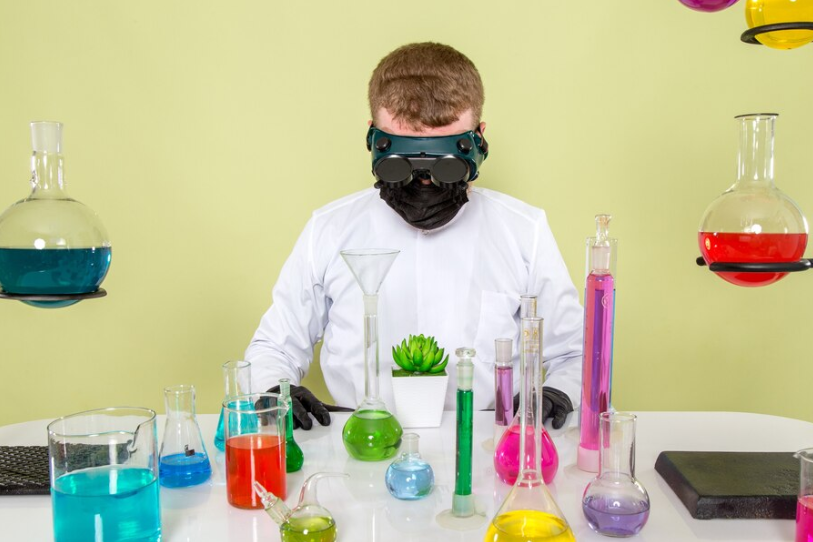Mastering Redox Reactions: A Complete Guide to Oxidation-Reduction Chemistry
Introduction
In this unit, we’ve explored precipitation and acid-base reactions. Now, it’s time to dive into the third critical type of chemical reaction: oxidation-reduction reactions, commonly known as redox reactions. These reactions are vital to numerous chemical processes, from generating electricity in batteries to the metabolism in cells. This guide breaks down redox reactions, how they work, and how to balance them, ensuring a solid foundation for your AP Chemistry studies and beyond.
What Are Redox Reactions?
Redox reactions involve the transfer of electrons between atoms or molecules, leading to a change in their oxidation states. Understanding these reactions requires grasping a few core concepts:
- Oxidation is the process of losing electrons, increasing the oxidation state of an atom.
- Reduction is the process of gaining electrons, decreasing the oxidation state of an atom.
💡 Quick Mnemonics:
- OIL RIG: “Oxidation Is Loss, Reduction Is Gain” (of electrons).
- LEO says GER: “Loss of Electrons = Oxidation, Gain of Electrons = Reduction.”
Understanding Oxidation States
The oxidation state (or number) of an atom in a compound represents the number of electrons it has gained, lost, or shared compared to its neutral state. Here are some key rules for assigning oxidation numbers:
- Free elements (e.g., Br₂, Na) have an oxidation number of 0.
- Neutral molecules have oxidation numbers that sum to 0.
- Monatomic ions have an oxidation number equal to their charge (e.g., Na⁺ = +1).
- Oxygen typically has an oxidation number of -2, except in peroxides (e.g., H₂O₂, where it’s -1).
- Hydrogen is usually +1 but -1 in metal hydrides (e.g., LiH).
- Fluorine always has an oxidation number of -1; other halogens generally have -1, but this varies in some compounds.
- Oxidation numbers can be fractions (e.g., superoxide O₂⁻ = -½), though rare.
Redox Reaction Example
Example Reaction: 2Mg (s) + O₂ (g) → 2MgO (s)
Step 1: Assign Oxidation Numbers
- Mg (elemental form) = 0
- O₂ (elemental form) = 0
- Mg in MgO = +2 (since oxygen is -2)
- O in MgO = -2
Step 2: Write Half-Reactions
- Oxidation half-reaction (Mg loses electrons): 2Mg → 2Mg²⁺ + 4e⁻
- Reduction half-reaction (O₂ gains electrons): O₂ + 4e⁻ → 2O²⁻
Step 3: Combine Half-Reactions
Adding the half-reactions and canceling out electrons yields the balanced redox equation: 2Mg + O₂ → 2MgO
Balancing Redox Reactions: Acidic and Basic Solutions
Balancing in Acidic Solutions
Example: Balance MnO₄⁻ + Fe²⁺ → Mn²⁺ + Fe³⁺ in an acidic solution.
Assign Oxidation Numbers:
- Mn in MnO₄⁻ changes from +7 to +2 (reduction).
- Fe changes from +2 to +3 (oxidation).
Write Half-Reactions:
- Oxidation: Fe²⁺ → Fe³⁺ + e⁻
- Reduction: MnO₄⁻ + 8H⁺ + 5e⁻ → Mn²⁺ + 4H₂O
Balance Electrons and Combine:
- Multiply the oxidation half-reaction by 5.
- Add the two half-reactions together and cancel out electrons: 5Fe²⁺ + MnO₄⁻ + 8H⁺ → 5Fe³⁺ + Mn²⁺ + 4H₂O
Balancing in Basic Solutions
Balancing redox reactions in basic solutions follows the same steps as acidic solutions, with an additional step to neutralize H⁺ ions:
- Add OH⁻ ions to both sides to form H₂O.
- Cancel any redundant water molecules to finalize the equation.
General Steps for Balancing Redox Reactions
- Assign oxidation states and identify elements being oxidized and reduced.
- Write half-reactions for the oxidation and reduction processes.
- Balance elements (excluding O and H) in each half-reaction.
- Balance oxygen atoms by adding H₂O molecules.
- Balance hydrogen atoms by adding H⁺ ions.
- Balance charge by adding electrons.
- Combine half-reactions, canceling out electrons.
- For reactions in basic solutions, add OH⁻ ions to both sides to convert H⁺ to H₂O.
- Double-check that all atoms and charges are balanced.
Practice Problem
Balance the Redox Reaction in Acidic Solution: Cr₂O₇²⁻ + Fe²⁺ → Cr³⁺ + Fe³⁺
Steps:
Assign oxidation states:
- Cr changes from +6 (in Cr₂O₇²⁻) to +3.
- Fe changes from +2 to +3.
Write half-reactions:
- Oxidation: Fe²⁺ → Fe³⁺ + e⁻
- Reduction: Cr₂O₇²⁻ + 14H⁺ + 6e⁻ → 2Cr³⁺ + 7H₂O
Multiply the oxidation half-reaction by 6 and combine: 6Fe²⁺ + Cr₂O₇²⁻ + 14H⁺ → 6Fe³⁺ + 2Cr³⁺ + 7H₂O
Conclusion
Mastering redox reactions involves understanding electron transfers, oxidation states, and balancing complex equations in acidic and basic environments. These reactions are crucial in diverse processes, from powering batteries to biological metabolism. Keep practicing, and you’ll be prepared for any redox challenge the AP Chemistry exam throws at you!







